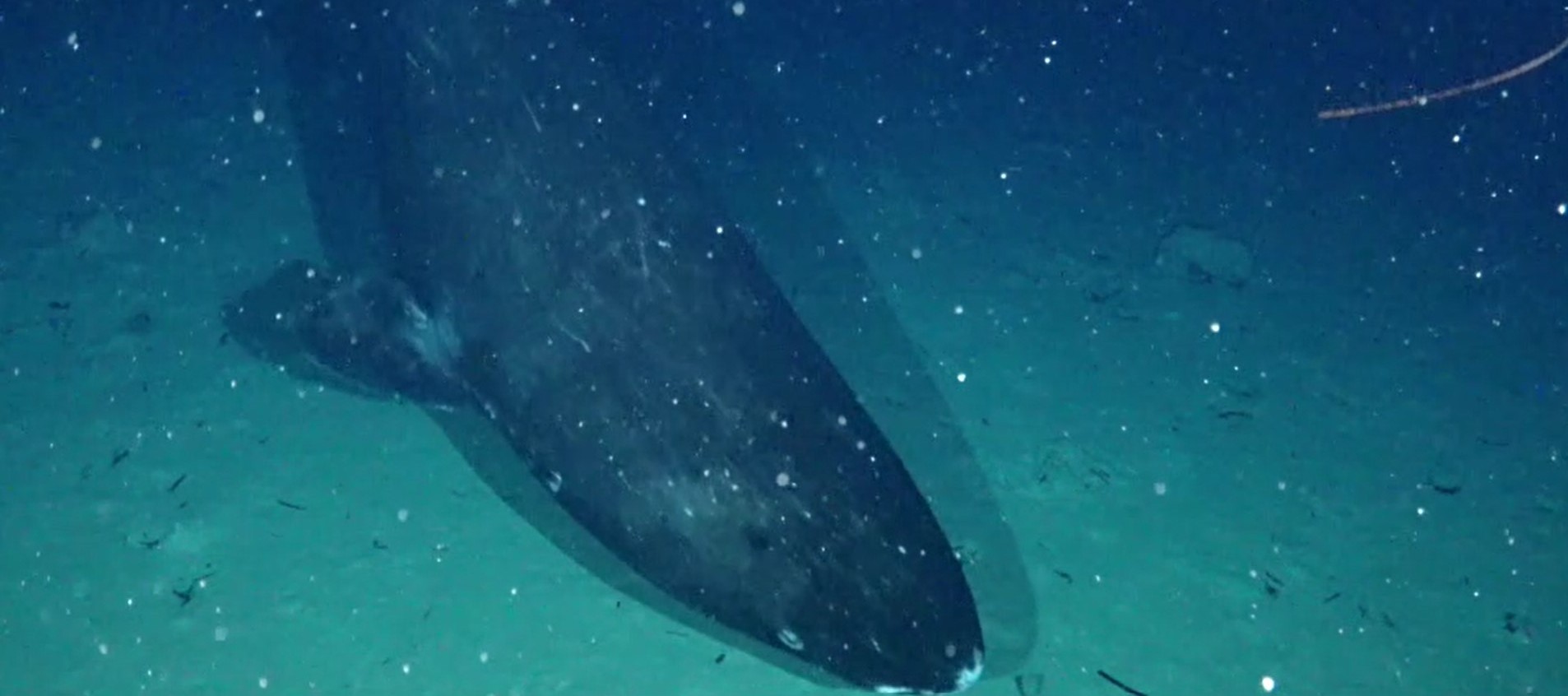- Research
Deep-sea shark species seen in Palau’s waters for the first time
A Pacific sleeper shark has been seen in Palau’s waters for the first time, thanks to a deep-sea camera system provided by National Geographic Society’s Exploration Technology Lab. The shark, which was previously thought to live only as far south as Taiwan, was observed to the east of Babeldaob at 1288 meters depth during research undertaken by the Palau International Coral Reef Center (PICRC) and National Geographic Society in 2021. Recently published in the Journal of Fish Biology, this finding extends the known range of this species well into the west Pacific and should guide future management.
Pacific sleeper sharks (Somniosus pacificus) are large deep-water sharks that live at depths of up to 2000m. Prior to this work, individuals were mainly seen from strandings or due to by-catch. Their range was thought to extend from Taiwan in the south to within the Arctic Circle in the north. This new observation in Palau, coupled with an observation in the Solomon Islands using the same technology (also reported in this research paper), extends their known range about 2000 nautical miles further south.
“A greater understanding of the range of this species, which is classed as ‘Near Threatened’ according to the IUCN Red List, will help guide future conservation action,” stated first author, Dr. Louw Claassens, former Researcher/ Science Officer at PICRC. “These deep-sea camera systems have allowed us to gain a better understanding of what lives in Palau’s deep ocean, which still remains very much a mystery!”
The deep-sea camera system, capable of descending to 6,000 meters, was deployed for a total of three hours in Palau. The individual in Palau’s waters was seen after two hours and 17 minutes, and was in and out of view for the remainder of the time. The shark, later deemed to be an adult male, interacted with the camera and bait canister—bumping into the camera and moving it.
As well as being an exciting discovery in itself, it also highlights that other, so far unreported, animals also probably live in this area of ocean. A previous study reported that Palau’s pelagic fauna is both diverse and rich with many different species of fishes found at thousands of meters of depth. Continued deep-sea exploration will allow for a better understanding of Palau’s pelagic environment and the animals, like the Pacific sleeper shark, that inhabit it.
The researchers would like to thank the Government of Palau for authorization to conduct research in Palau, as well as Oasis Palau for assisting with fieldwork in very rough weather. The lead author received funding from the National Geographic Society Exploration Technology Lab to conduct this research in Palau.


